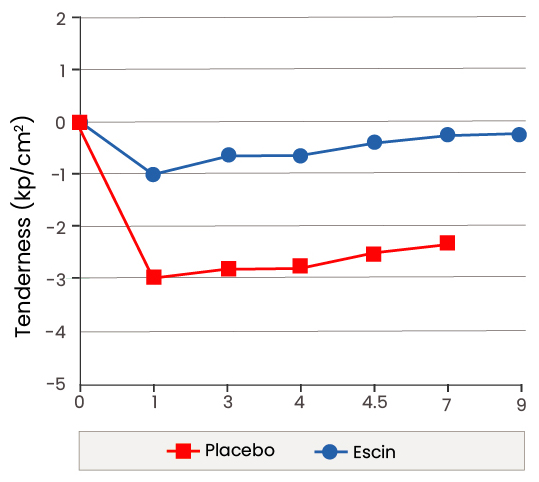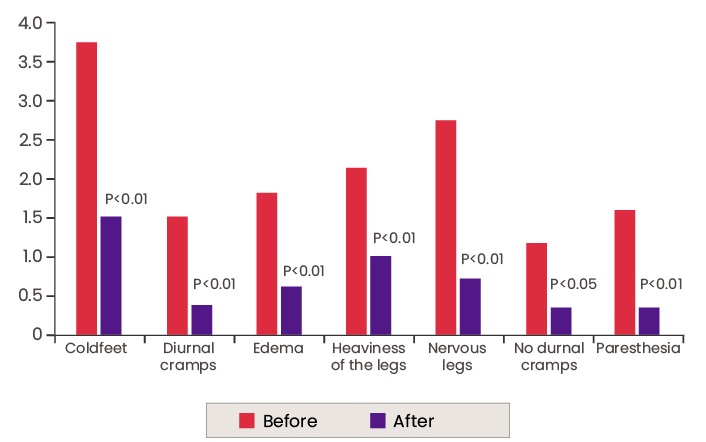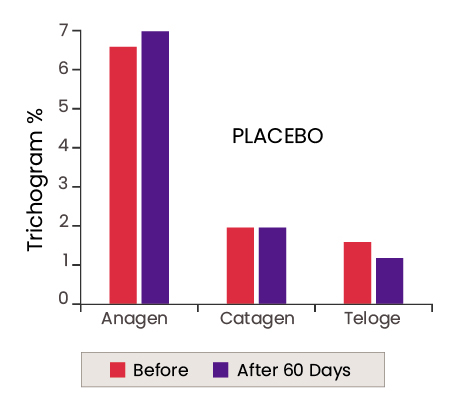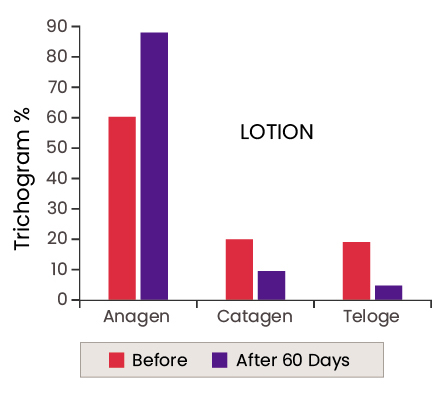Study 1
In a clinical study, a cosmetic topical emulsion with 2% escin was evaluated for its effectiveness in enhancing the appearance of skin in the initial stages of edema related to panniculopathy on the thighs and breasts. This study involved 50 female volunteers who sought improvement for various skin concerns associated with venous stasis in the thighs, such as roughness, pastiness, elasticity, pliability, and overall skin condition. Through a 30-day application period, the product’s impact on skin appearance was meticulously assessed using High Performance Contact Thermography, Infrared Photoplethysmography, and Laser-Doppler Flowmetry, assigning score values from 0 to 4 for each symptom before and after use.
Results from the study highlighted the cosmetic benefits of the escin-based emulsion, showing a noticeable improvement in skin texture and condition. Participants observed a reduction in the appearance of hypothermic areas and an enhancement in skin temperature uniformity, indicating the product’s efficacy in supporting the visual aspects of skin health and appearance. The findings suggest that regular application of the escin complex can contribute to a more even skin tone and texture, aligning with the goals of cosmetic skincare by improving microcirculation and reducing the visual effects of edema and venous stasis
Reference
Bombardelli, E., et al. Topical anti-inflammatoy activity of complexes of escin and sterols with phospholipids. Part I. 1989: 39-44.
Study 2
In a study conducted by researchers at Bastyr University in Kenmore, USA, the cosmetic efficacy of a topical gel containing 2% escin was evaluated through a double-blind, randomized, single-dose trial involving 71 healthy participants, with 70 completing the study. The focus was on the gel’s ability to improve the appearance of experimentally induced bruises on the forearm, which were created by subcutaneous injection of the participant’s own blood.
Experimental hematoma was induced in the forearm by subcutaneous injection of 2 mL of the patient’s own blood obtained immediately before from the cubital vein. 10 g of either escin (34 subjects) or a placebo gel (36 subjects) was applied 5 minutes after the injection. Tenderness measurements were recorded initially and after supplementation using a calibrated tonometer that records the pressure at which there is the first perception of pain. The topical gel significantly improved the tenderness condition compared to placebo supplemented group (Fig. 6).

Reference
Calabrese C, Preston P. Report of the results of a double-blind, randomized, single-dose trial of a topical 2% escin gel versus placebo in the acute treatment of experimentally-induced hematoma in volunteers. Planta Med. 1993;59(5):394-397.
Study 3
Esculin, the coumarin in the extract is also useful for topical application. The main pharmacological actions of esculin include capillary protection and the inhibition of enzymes such as hyaluronidase and collagenase. Esculin improved skin vasculature and is effective in the management of cellulitis. 20 women with chronic venous stasis and cellulitis were supplemented for two months, twice a day with an emulsion containing 3% esculin. Topically applied esculin increased the capillary density (number of capillaries open to flow per surface unit) and the structural integrity of the blood vessels (Fig. 7).

Reference
Bombardelli E, Morazzoni P, Griffini A. Aesculus hippocastanum L. Fitoterapia. 1996;67:483–511.
Study 4
A fomulation containing 1% esculin, 0.5% ximenynic acid and 0.2% lauric acid reduced hair loss in people suffering from androgenic and symptomatic alopecia. In the placebo-controlled study, the formulation was applied to the scalp of male and female volunteers suffering from hair loss. The formulation induced beneficial effects on scalp microcirculation and on seborrhea, leading to improved hair vitality (Fig. 8). Trichograms (microsopic details of plucked hair) were compared to evaluate hair vitality.


Figure 8. Effect of topical application of a formulation (lotion) containing esculin on the trichogram in volunteers
Reference
Maramaldi Giada, Giacomelli Luca, Meneghin Martino, Eggenhoffner Roberto, Togni Stefano. Effectiveness of a multi-component lotion in the control of hair loss. Esperienze Dermatologiche – Dermatological Experiences. 2016;18:70-7.